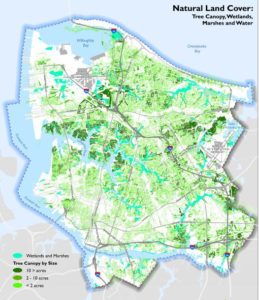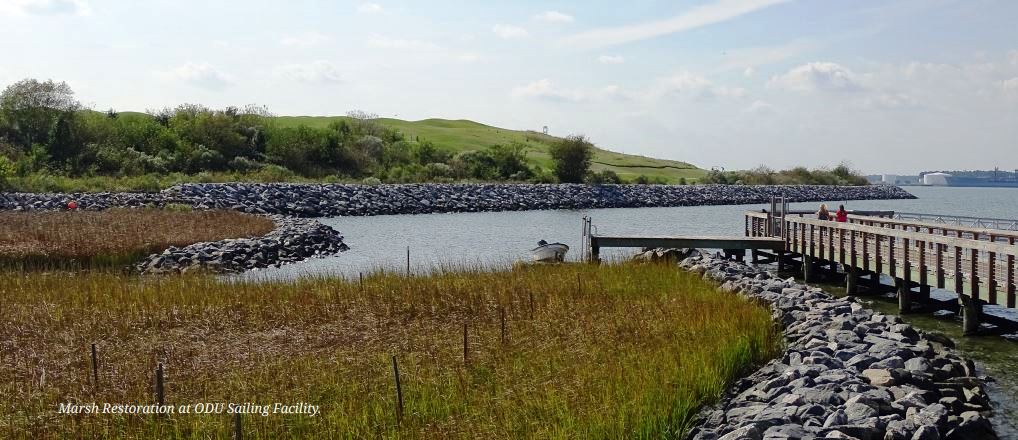Norfolk, Virginia is wisely taking a strategic approach to its natural environment with the creation of a new Green Infrastructure Plan.
From shoreline renovations to restoring and expanding the city’s tree canopy, city leaders hope that their new Green Infrastructure Plan will help transform Norfolk into the coastal community of the future.
Norfolk City Council approved the plan on July 10, 2018. It’s organized into two themes—land and water—and focuses on increasing the amount of natural and constructed green infrastructure by ensuring adequate open space, increasing the tree canopy, and restoring natural shorelines.
Examples such as wetland restorations at 46th Street and Colley Bay represent this type of work.
Developed over the past two years, the Green Infrastructure Plan was funded by a $4.6 million-dollar grant awarded in 2015 from the National Fish and Wildlife Foundation and the U.S. Department of the Interior’s National Fish and Wildlife Service. The grant also funded 8 neighborhood shoreline projects that have been completed or are currently under construction. Examples include the completed shoreline at Knitting Mill Creek and projects under construction along Villa Circle and Beach Avenue.
 The plan is the culmination of a two-year effort to map and plan for Norfolk’s Green Infrastructure. Just as the city plans for the maintenance, modification, and expansion of its “grey infrastructure,” such as roads, sidewalks, or storm drains, it must do the same for its green infrastructure.
The plan is the culmination of a two-year effort to map and plan for Norfolk’s Green Infrastructure. Just as the city plans for the maintenance, modification, and expansion of its “grey infrastructure,” such as roads, sidewalks, or storm drains, it must do the same for its green infrastructure.
Green infrastructure consists of the marshes, creeks, parks and trees that provide habitat, filter the air and water, moderate air temperatures, and provide recreation and scenic beauty. Increasingly, cities are also evaluating and managing their green infrastructure in a coordinated fashion.
For example, they are linking their tree canopy to stormwater management as they realize that trees and other shrubs help tremendously in intercepting and
absorbing rainfall. Many cities also realize that green features, such as parks and open spaces, make cities more livable and attract people to move to and stay in areas that are greener and because they offer healthier lifestyles, such as walking to work or school.
This plan provides the results of the analysis conducted by the city and its partners, as well as strategies to conserve and restore the city’s green infrastructure. This plan will help the city realize new or expanded benefits from its green infrastructure such as, clean water, recreation, stormwater uptake, storm buffering, habitat protection and walkable, vibrant neighborhoods.
Images courtesy of City of Norfolk.

